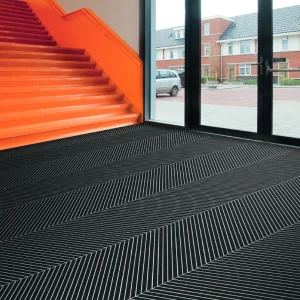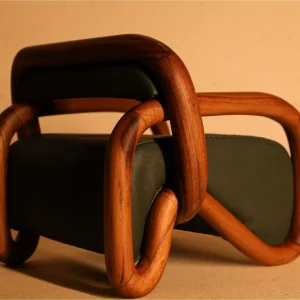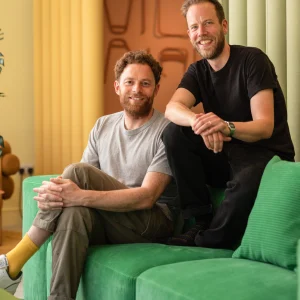
A few months on from the 10th anniversary in March of the Eden Project, Michael Pawlyn, one of its central architectural actors, has published a book on the ecological philosophy at the heart of the strange and exciting plant-filled biomes.
Biomimicry in Architecture is a primer to an all-encompassing way of approaching building culture. It steps outside much of the conventions of architectural thinking, arguing that the current and coming environmental challenges are most effectively met if architects – as much as other designers – look to and learn from the natural world, finding relevant examples of biological and ecological systems that are then imitated.
‘Human-made systems tend to use design to maximise for a single goal,’ states the thoughtful Pawlyn, formerly part of the core team at Grimshaw, ‘while ecosystems have evolved towards an optimised overall system. This is what is needed across the designing of the built environment. It’s absolutely fundamental.’
In his well-illustrated book, many surprising and striking examples of how and where nature can inspire building design are introduced, with examples taken from small and large alike. So for instance, the Namibian fog-basking beetle. Its system of collecting its own water through a matt black outer layer that radiates heat at night, attracting water vapour droplets that it then drinks by tipping up its shell, is an inspiration to a variety of profiled projects. Another example, known as Murray’s Law, describes the mathematical properties of branching in leaves, trees and other natural forms, which Pawlyn envisages architects and engineers building on and developing.
Across eight short chapters Biomimicry in Architecture provides a catalogue of inspiring examples from the natural world that elegantly and efficiently solve key challenges of modern architecture, such as energy usage, water supply and ventilation. The roots of biomimicry are traced back to the pioneering engineering research of Sixties’ heroes such as Buckminster Fuller and Frei Otto, and the influence of the biologist D’Arcy Thompson’s 1917 book On Growth and Form on computer-savvy architects, including the master of skeletal structures Santiago Calatrava. It also clarifies the distinction of biomorphic design, which while it may reflect the natural world’s appearance does not operate and work the same way at all.
Pawlyn acknowledges that biomimicry hasn’t taken root in architecture, compared to industrial design and other aspects of engineering. ‘We need to think through what it means to be truly sustainable, rather than just mitigating the negative impacts, and work out what that implies for our buildings and the systems into which they fit,’ states Pawlyn, apparently confident biomimicry’s day is coming.
This requires the architectural world rethinking how such systems work and knowing what are the important areas that require focusing on. ‘There are three key challenges: radical increases in resource efficiency, a move from a linear to a closed loop approach to materials, and moving from a fossil-fuel economy to a solar economy,’ he writes.
Pawlyn, it seems, happened to be in the right place at the right time, arriving at Grimshaw in 1997 to work on the Eden Project. Although his sustainable architecture thinking was already well developed, it was attending a Schumacher Society course in 2003 run by veteran energy environmentalist Amory Lovins and Janine Benyus that seems to have turned everything upside down. ‘It was a phenomenal week,’ Pawlyn recalls. ‘I learned more in that week than in the previous 10 years of seminars and conferences.’
After developing Grimshaw’s green portfolio further, in 2007 Pawlyn set up his own company, Exploration Architecture, dedicated to biomimicry projects: ‘I wanted to explore a new way of working, one which begins with idealised proposals rather than the general reactive approach of much architecture.’
Of the resulting projects, the highest profile one is the Sahara Forest Project, which seeks to help turn the tide of desertification. Reminding us that ‘for millennia the Sahara was a fertile, heavily forested landscape, until Julius Caesar had the forests cut down as raw material for the empire’, this ancient example of slash and burn may be the mother of extractive human-systems gone awry, turning vegetated land into desert within a few hundred years, a forerunner to present-day woes.
The Sahara Forest Project provides a way of beginning to turn this around, with a starring role for the humble fog basking beetle as its design starting point in the guise of seawater-cooled greenhouses. Together with another, in Pawlyn’s words, ‘proven’ technology – concentrated solar power – the project’s systems approach could provide not only energy for entire cities in North Africa and Middle East but also restore vegetation and agriculture to the desert.
Some way from conventional green designs’ focus on energy and carbon reduction, biomimicry offers architects a radical systems approach. Pawlyn’s aim has always been for wider architectural take-up; now, with his book there is also a manifesto to spread the biomimicry message of exploration far and wide.





